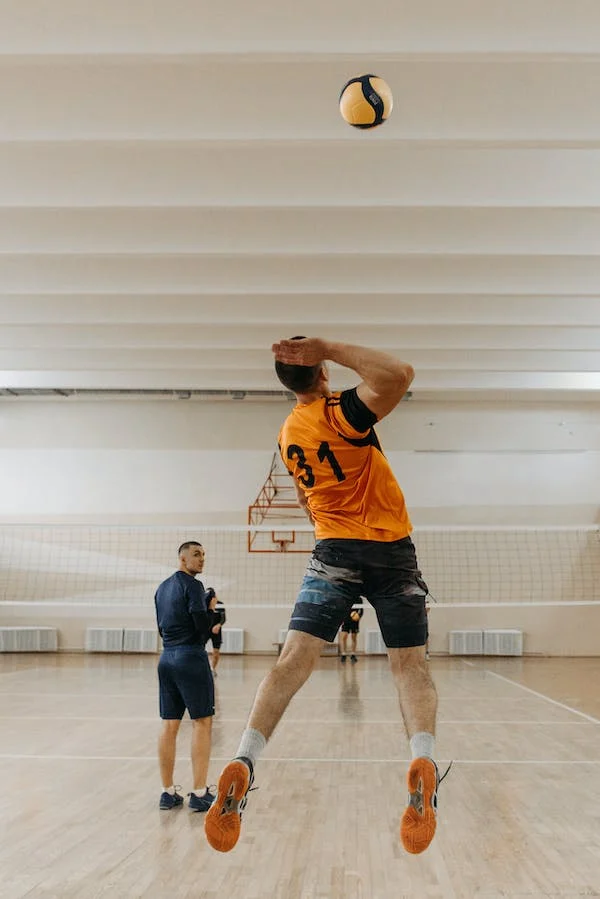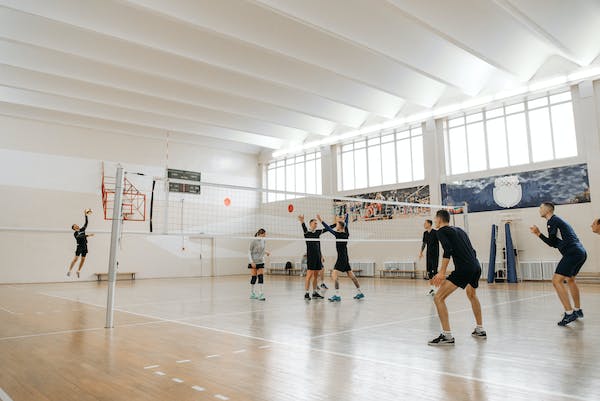Introduction
One of the fundamental elements of volleyball is serving, where players initiate the rally by sending the ball over the net to the opposing team. If you’re new to the sport or want to refresh your memory on the rules, it’s important to know how many times can you serve in volleyball. Let’s take a closer look at this part of the game.
In traditional volleyball, each player rotates through designated positions on the court, including the serving position. The serving player stands behind the back boundary line, known as the end line or the service line. They have the opportunity to serve the ball into the opponent’s court to begin the rally.
Now The Question Arises: How Many Times Can You Serve In Volleyball?
The answer is simple: In standard volleyball rules, a player serves until their team commits a fault or loses the rally. This means that as long as the serving team continues to win points, the same player will continue serving. However, if the serving team commits a fault, such as serving out of bounds or failing to send the ball over the net, the serve is lost, and the opposing team gains possession of the ball.
It’s essential to note that in volleyball, each player must rotate positions clockwise after their team wins the serve back from the opposing team. This rotation ensures equal distribution of playing opportunities among team members and prevents any player from gaining an unfair advantage by continuously serving.
In the case of faults or errors during serving, such as foot faults or serving into the net, the opposing team earns a point and gains the right to serve. In the game, both teams keep taking turns to serve, aiming to keep control of the ball and score points.
Additionally, in certain variations of volleyball, such as beach volleyball or recreational play, rules may vary slightly.
For example, some recreational leagues may impose limits on the number of consecutive serves by a single player to promote fairness and inclusivity. It’s always a good idea to familiarize oneself with the specific rules governing the volleyball game being played.

The Basic Rules of Serving in Volleyball
The Starting Position
Players must start their serve from behind the end line of the court. They have the freedom to choose their position along the backline before executing the serve.
The Serve Execution
The serve can be executed using various techniques such as the overhand serve, underhand serve, jump serve, or float serve. Each technique offers its own advantages and challenges, requiring players to develop versatility in their serving abilities.
Faults and Violations
Faults in serving include stepping on or over the end line during the serve, failure to toss the ball cleanly before striking it, and serving the ball into the net. Violations may result in the loss of serve or points for the opposing team.
The Importance of Effective Serving
Effective serving can disrupt the opposing team’s offense, putting pressure on them to make difficult passes and setups. It’s not only about putting the ball in play but also about strategically placing serves to exploit weaknesses in the opponent’s defense.
Common Mistakes to Avoid in Volleyball Serving
Foot Faults
One of the most fundamental rules in volleyball serving is to ensure that your feet remain behind the end line or service line while executing a serve. Stepping on or over these lines before making contact with the ball results in a foot fault, which leads to a point for the opposing team. To avoid this mistake, players should practice their footwork and develop a consistent serving routine that helps them maintain proper positioning.
Lack of Focus
Serving requires concentration and focus to execute properly. A common mistake is to lose focus or rush through the serving motion, leading to errors such as serving into the net or out of bounds. Players should take their time, visualize their intended target, and maintain focus throughout the serving process.
Incorrect Ball Toss
The toss is a crucial aspect of the serve, as it sets the stage for the entire serving motion. A common mistake is to toss the ball too low, too high, or too far in front of or behind the serving arm. An inconsistent toss can make it difficult to make clean contact with the ball, resulting in a weaker or inaccurate serve. Players should practice their tosses to ensure consistency and precision.
Poor Technique
Serving technique involves a combination of arm swing, wrist snap, and body position. Common technical mistakes include using too much arm and not enough wrist, failing to follow through fully, or not engaging the entire body in the serving motion. Players should focus on using proper technique, including generating power from the legs and core, to maximize the effectiveness of their serves.
Overcomplicating the Serve
While it’s important to have a varied serving repertoire, trying to execute overly complex serves without mastering the basics can lead to errors.
Players should focus on developing a few reliable serves, such as the float serve or topspin serve, before attempting more advanced techniques.
Mastering the fundamentals lays the foundation for more advanced serving strategies.
Ignoring Game Situation
The serving strategy should vary depending on the game situation, including the score, the opponent’s weaknesses, and tactical objectives.
A common mistake is to serve with the same intensity and placement regardless of the game context. Players should be aware of the game situation and adjust their serving strategy accordingly, whether it’s aiming for a specific player, targeting weak rotations, or serving more conservatively to avoid errors.
Lack of Practice
Like any skill in volleyball, serving requires consistent practice to improve. A common mistake is to neglect serving practice or focus solely on other aspects of the game.
Players should dedicate time to serve-specific drills and exercises to develop their skills and build confidence in their serving abilities.
Getting Distracted
Serving can be a high-pressure situation, especially during crucial moments of a match. A common mistake is to get distracted by external factors such as crowd noise, opponent antics, or personal pressure. Players should focus on their routine, block out distractions, and maintain a positive mindset to perform their best under pressure.

Tips for Improving Your Serving Skills
Focus on Footwork
Ensure your feet are positioned correctly behind the end line or service line to avoid foot faults.
Work on Tossing
Practice tossing the ball consistently and accurately to set up your serve effectively.
Develop Technique
Focus on using proper arm swing, wrist snap, and body movement to generate power and control in your serves.
Master Basic Serves
Start with mastering basic serves like the float serve or topspin serve before attempting more advanced techniques.
Practice Variety
Experiment with different types of serves to keep opponents guessing, but make sure to maintain consistency in your execution.
Serve with Purpose
Consider the game situation and strategize your serves accordingly, whether it’s targeting weak rotations or aiming for specific players.
Stay Relaxed
Keep a relaxed grip on the ball and maintain a loose, fluid motion during your serving action to maximize power and accuracy.
Visualize Success
Visualize yourself serving confidently and accurately before stepping up to the service line to boost your confidence.
Receive Feedback
Seek feedback from coaches or experienced players to identify areas for improvement and refine your serving technique.
Practice Regularly
Dedicate time to serving practice during training sessions to build muscle memory and consistency in your serves.
Conclusion
In conclusion, the number of times a player can serve in volleyball is not limited by a set number but rather by the outcome of the rally. As long as the serving team continues to win points, the same player will keep serving.
Understanding the rules of serving in volleyball is important for both players and fans to fully enjoy this exciting sport.
Can a player serve twice in a row in volleyball?
Yes, a player can serve twice in a row in volleyball if their team wins a point while they are serving.
Can the server step on the back line?
No, the server cannot step on or over the back line while serving in volleyball.
Is there a re-serve in volleyball?
No, there is no re-serve in volleyball. Once a player has served, they cannot serve again until their team wins the point or the serve rotates to another player.
Do liberos serve?
No, liberos cannot serve in volleyball. They are specialized defensive players who are restricted from serving, attacking the ball above the net, or blocking. Their primary role is to excel in passing, digging, and defense.
Can you punch a serve in volleyball?
No, you cannot punch a serve in volleyball. According to the rules, a serve must be made using an overhand or underhand motion, striking the ball with the hand or any part of the arm below the wrist. Punching the ball with a closed fist is not allowed and would result in a fault.
